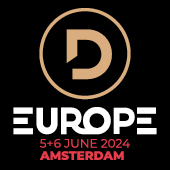Northern European postal operators invest in technology for last-mile deliveries
.jpg)
Postal operators in Northern Europe are testing and rolling out new technologies and digital solutions to improve last-mile deliveries.
PostNord, Norway Post and Estonia’s Omniva are investing in diverse innovations such as parcel lockers, robots and digitally-controlled smart locks for in-home deliveries, executives told last week’s Leaders in Logistics Last Mile Delivery conference in London.
Isabelle Baumann, PostNord’s head of Business innovation and Technology, explained how the Swedish-Danish postal group is digitalising its logistics activities through consumer- and business customer-facing digital platforms.
For example, the highly-popular PostNord app, which has been downloaded 3.5 million times in the thinly-populated Nordic countries, offers consumers a range of delivery time and location options, including to 7,000 pick-up points or home delivery from a service point, along with a DigitalID function.
One forthcoming service will be the integration of digital locks, enabling consumers to give remote access to their homes for in-home deliveries. “We are just seeing the start of digital locks,” Baumann commented.
In parallel, PostNord is taking retailers on a “digital journey” with a delivery management portal now used by 300,000 retail customers, she said. For example, retailers receive delivery status notifications from PostNord and can pro-actively inform customers about changes.
The postal operator also has a ‘digital checkout offer’ for retailers, enabling them to show different delivery options to customers at the point of sale. Another service is a free ‘click & collect’ option now used by about 1,000 retailers to sell online and provide parcel collection in-store, thus generating additional physical visits to their outlets.
Operationally, PostNord is implementing ‘next-generation’ logistics with route planning using real time data and information. This helps the company to improve delivery efficiency and level out volume flows at different times of the day and week.
Baumann emphasised that through these different digital initiatives PostNord wants to move up the e-logistics value chain to avoid becoming a delivery ‘commodity’. In future, she warned, AI systems could even decide which suppliers to use for which part of the logistics chain, based on a wide range of data, ratings, and other information.
“We are not selling parcels, we are selling e-commerce,” she declared. “In future, the battle in logistics will be in digital, not in physical.”
Gunnar Inderberg, Head of Value Chain Development within the mail division of Posten Norge (Norway Post), presented what he described as “the world’s first combined letters and parcel delivery robot” which is currently being tested.
This fully-autonomous machine, which can serve up to 100 households, is filled with letters and parcels at a sorting centre in the morning, drives itself at a slow 6km/h to a residential area where it parks for the day, and then drives back to the sorting centre at night for re-filling. The robot contains 20 small parcel compartments and has a range of 4km.
“It is still a prototype but the technology is fairly advanced and it works pretty well,” Inderberg commented. However, with regulation for such a technology “still in its infancy” the robot has to be accompanied by a person during the live tests, he noted.
Nevertheless, “this is seen as an acceptable delivery solution and people are willing to use it”. Once the costs of the robot fall, it could be a potential large-scale solution for the future, he commented.
In the Baltic states, parcel lockers are very popular and carriers are expanding their alternative delivery points. In Estonia alone, for example, there are three parallel locker networks. Postal operator Omniva has 244 lockers, Itella SmartPost (a Posti subsidiary) has a further 122 terminals and DPD has 82 self-service machines. This adds up to 448 lockers for a population of just 1.3 million.
Andre Veskimeister, Ominiva’s head of parcel services, told delegates that almost 50% of the company’s parcels are now delivered to lockers rather than to homes. Omniva, which faces a 20% shortage of drivers, operates a total of 534 lockers in Estonia, Latvia and Lithuania.
“We really believe in parcel lockers. Parcel lockers are the future of last-mile,” he commented. But he underlined: “Lockers are not a dead end. Home delivery is still possible with ‘Uber-like’ service providers from lockers to home on demand.”
Asked about locker sites, Veskimeister said most Omniva machines had so far been in or near supermarkets. But he suggested that offices and workplaces would be “the next targets” for lockers.
He was also generally optimistic about the potential of deliveries using autonomous vehicles but played down the chances of the small-capacity Starship robots, which Omniva has tested in several locations. “We delivered 1,000 parcels in the test. But someone still needs to fill and empty parcels from the robot,” he observed.

